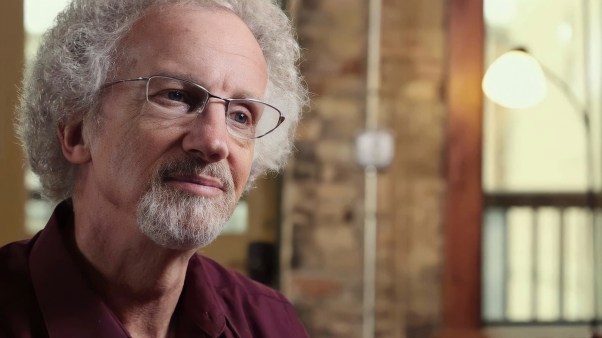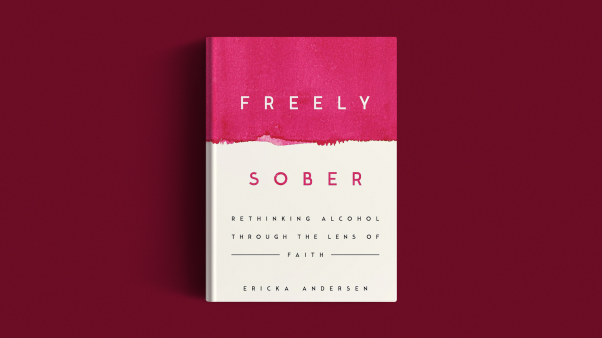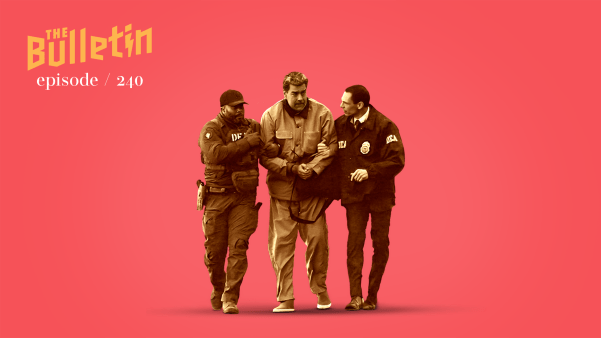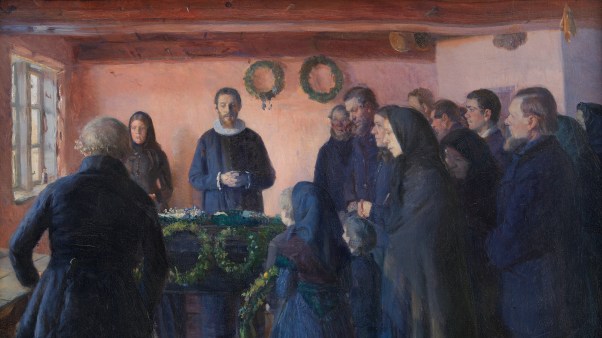The black Baptists of the South are not known for their adherence to a liturgical calendar, but we do know Palm Sunday and Easter. Palm Sunday is the tremor before the earthquake of our resurrection celebration, the birth pangs. Palm Sunday, then, is not the time for the best songs, suits, or dresses. The palms and shouts of hosanna are a preparation for something greater, the acclamation that Christ is risen.
But as the Palm Sundays have stacked one upon the other, more questions linger. What did Jesus want to teach us when he entered Jerusalem astride a donkey to the shouts of hosanna? Did he do it so that we would have a nice liturgical action of palm-waving to entertain the kids on the verge of Eastertide?
Immediately following Jesus’ arrival in Jerusalem amid waving palm branches, Matthew, Mark, and Luke record that his next stop is to clear out the Temple. What does the clearing of the Temple have to do with palms and the parade from earlier? Last and most importantly, what do these two events have to say to us as we prepare to celebrate the resurrection of Jesus in churches divided by race and class?
The Temple and palms do speak with a common voice. They reveal God’s vision for peace between the ethnicities and our reconciliation under the universal kingship of Jesus. To hear that common voice, we must pay close attention to the Scriptures that Jesus uses to interpret his actions on the first two days of Holy Week.
Beyond Humility
Palm Sunday begins with Jesus on the outskirts of Jerusalem instructing his disciples to bring him a donkey to ride into the city. The gospel writers make it clear that this royal gesture is a dramatic enactment of Zechariah 9:9. The section quoted in the Gospels says, “Do not be afraid, Daughter Zion; see, your king is coming, seated on a donkey’s colt” (John 12:15). The sign of the king of the universe coming on a donkey’s colt has been the fodder for many hymns, possibly the most famous being the line “Ride on! Ride on in majesty in lowly pomp ride on to die; bow thy meek head to mortal pain, then take, O God, thy power and reign.”
In this reading of Jesus’ actions, Palm Sunday reveals his humility. He is not like other kings who enter cities atop war horses in celebration of bloody victory surrounded by those society deems worthy. He is the humble king who saves by dying for the sins of the world. That Jesus cares for the lowly has long been a source of solace for oppressed people of color. The Messiah becomes the foundation of a restored sense of dignity in a culture that often denied their personhood. This interpretation of Palm Sunday has much to commend it, and I have no intention of unraveling it. I do, however, want to highlight a theme that is often missed.
The first rule for understanding Old Testament citations in the New Testament is to go back to the original context and see how that informs the New Testament’s use of the Old. When we go back and see the wider context of Zechariah 9:9, we observe a focus on the reconciliation of the nations.
Rejoice greatly, Daughter Zion! Shout, Daughter Jerusalem! See, your king comes to you, righteous and victorious, lowly and riding on a donkey, on a colt, the foal of a donkey. I will take away the chariots from Ephraim and the warhorses from Jerusalem, and the battle bow will be broken. He will proclaim peace to the nations. His rule will extend from sea to sea and from the River to the ends of the earth. (Zech. 9:9–10, my emphasis)
According to Zechariah, the coming of the Messiah will signal the end of war in Israel. The weapons are put away! Instead of words of violence, the Messiah will speak words of peace to the nations. Stated differently, according to Zechariah 9:9–10, the coming of the Messiah does not involve the destruction of the nations but the extension of blessing to the nations.
The words “from sea to sea and from the River to the ends of the earth” in Zechariah 9:10 are drawn from Psalm 72:8. Psalm 72 says that the Abrahamic promises of blessing to the nations will be fulfilled through the just, righteous, and international rule of the Davidic King: “May his name endure forever; may it continue as long as the sun. Then all nations will be blessed through him, and they will call him blessed” (Ps. 72:17).
Jesus’ choice of Zechariah 9:9–10, then, says that his coming means God’s plan of bringing blessing to the nations will occur in and through his reign. This reign will be known for peace between Jews and Gentiles and blessings for all. Palm Sunday isn’t just about humility; it also about the expansive kingdom of the Son.
Therefore, we remember Palm Sunday rightly when we remember that God has called the divided peoples of the earth (black, white, Latino, Asian) to peace and reconciliation. This is not anachronism. This is the application of the good news in Christ to the reality of life in our day. We must long to be reconciled to our brother or we miss a crucial aspect of what Palm Sunday teaches.
For All Ethnicities
Can we be sure that Jesus had peace, reconciliation, and his rule over Jews and Gentiles alike in mind when he entered the city? Is this really what Palm Sunday means? John’s gospel confirms it. After Jesus enters Jerusalem, the Pharisees say that “the whole world has gone after him” (John 12:19). Then a group of Greeks ask Philip if they can see Jesus. When report of this reaches Jesus, he says that his hour has come.
Throughout John’s gospel, we are told that Jesus’ hour had not come, that the time for his suffering and death had not yet arrived. But after the Greeks come, Jesus says that his hour has indeed come. Why? Jews bringing Gentiles to see Jesus shows that God’s vision for the reconciliation of all things is beginning to come about. I contend, then, that different ethnic groups shouting hosanna together bear a unique testimony to the type of kingdom the Messiah established. Our life together is not an implication of the gospel; it is a manifestation of it.
When we see Palm Sunday as a testimony to the reconciliation of divided peoples under the reign of the Messiah, then the Temple clearing takes on a new meaning. Scholars are divided on the timing of the cleansing of the Temple and the cause of Jesus’ indignation. Those questions need not detain us. My focus again is on the text that Jesus cites to defend his actions. He quotes the following, “Is it not written: ‘My house will be called a house of prayer for all nations’? But you have made it ‘a den of robbers’” (Mark 11:17).
The first half of this verse comes from Isaiah 56:7. Similar to Zechariah 9:9–10, it focuses on God’s expansive vision for the nations:
“And foreigners who bind themselves to the Lord to minister to him, to love the name of the Lord … who hold fast to my covenant—these I will bring to my holy mountain … for my house will be called a house of prayer for all nations.” The Sovereign Lord declares— he who gathers the exiles of Israel: “I will gather still others to them besides those already gathered.” (Isaiah 56:6–8, my emphasis)
Isaiah sees a day when Jews and Gentiles will worship God together. He also envisions God going beyond the ethnic boundaries of Israel to gather the ethnicities of the world to himself. According to Jesus, the leaders of his day were preventing the Temple from becoming the “house of prayer for all nations.” Stated differently, the temple clearing of Monday shows that same concern for the nations and their relationship to God as the entry into Jerusalem on Sunday. Jesus isn’t simply concerned about the corruption of the Temple, he’s concerned about what that corruption means for Gentiles encountering God.
The Temple and the palms, then, speak with one voice. Jesus is engaged in two symbolic actions with clear Old Testament foundations from Zechariah 9:9–10 and Isaiah 56:6–8. These texts speak to God’s desire for the peoples of the world divided by strife to be reconciled under the kingship of the Messiah and to join together in the worship of the one true God.
We remember the events of Palm Sunday and the clearing of the Temple properly when we allow our hearts to be captured by the vision of the church as the place where the nations speak peace to one another and worship the triune God together.
But what would these words of peace be? What would our life together look like? Is it the assimilation of blacks, Latinos, and Asians into white evangelicalism? My hardest fight in evangelism has not been the battle to maintain my orthodoxy against liberalism; it is the struggle to maintain my sense of “somebodiness” as a black person who loves his cultural identity and the Lord.
Too often when we think of reconciliation it is others joining the majority culture on the political, cultural, and social terms set by the majority. But Christ did not come so that we might all be assimilated, but so that we might be reconciled. Reconciliation demands that the majority culture listen to their brothers and sisters of color and act on the concerns that they raise. For example, if the concerns of the vast majority Christians of color about the current public political posture of many white evangelicals are ignored and dismissed as some liberal agenda, then we have placed a political posture above the unity across ethnicities that the gospel demands.
If issues of justice are always good ideas whose time has not yet come, then how can we be reconciled? If all the institutions of power continue to be run and maintained by the majority culture and speak with that voice, how can we be reconciled? How many evangelical colleges and seminaries have people of color as presidents or in positions of real influence? How many denominations? How many Christian magazines? How many publishers?
The nature of the gospel demands a diverse set of leaders who will, guided by the Spirit, help set the agenda for the future of the church. I speak, then, of a costly peace that will require a real commitment to truth-telling and justice. But if we accomplish it, our worship and life together will testify to God’s great vision to reconcile all things in his Son.
Esau McCaulley is assistant professor of New Testament and early Christianity at Northeastern Seminary. He is also one of the organizers of the Call and Response Conference, an event examining the past, present, and future of black Christians in America. He writes about New Testament scholarship, Anglicanism, and the black experience for The Living Church and his blog, Thicket of the Jordan.









